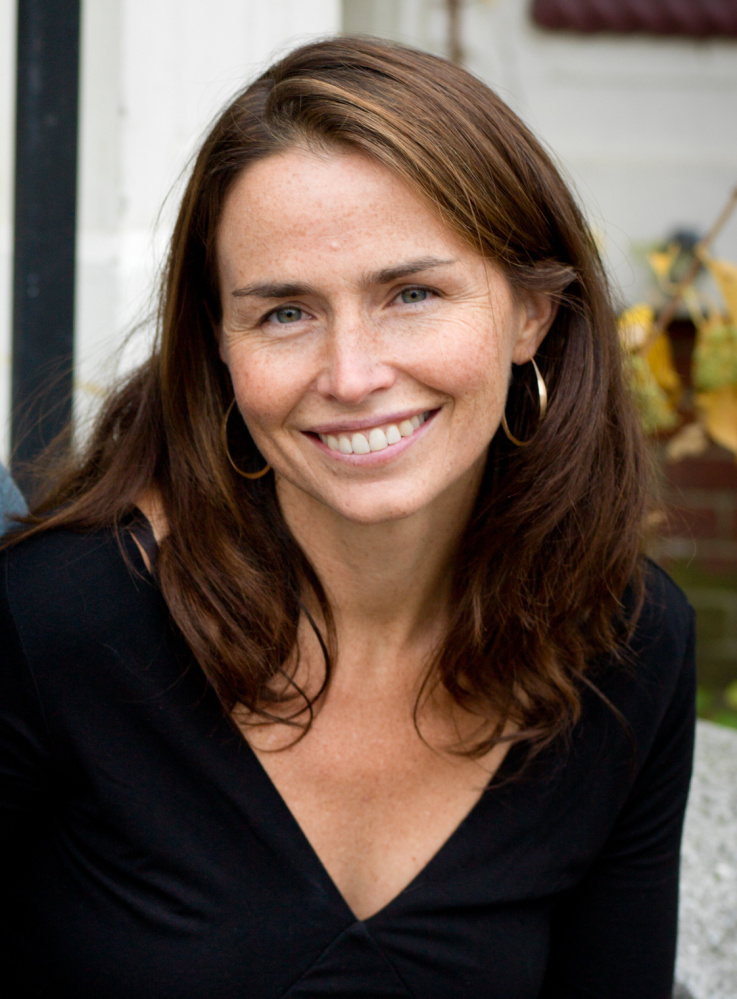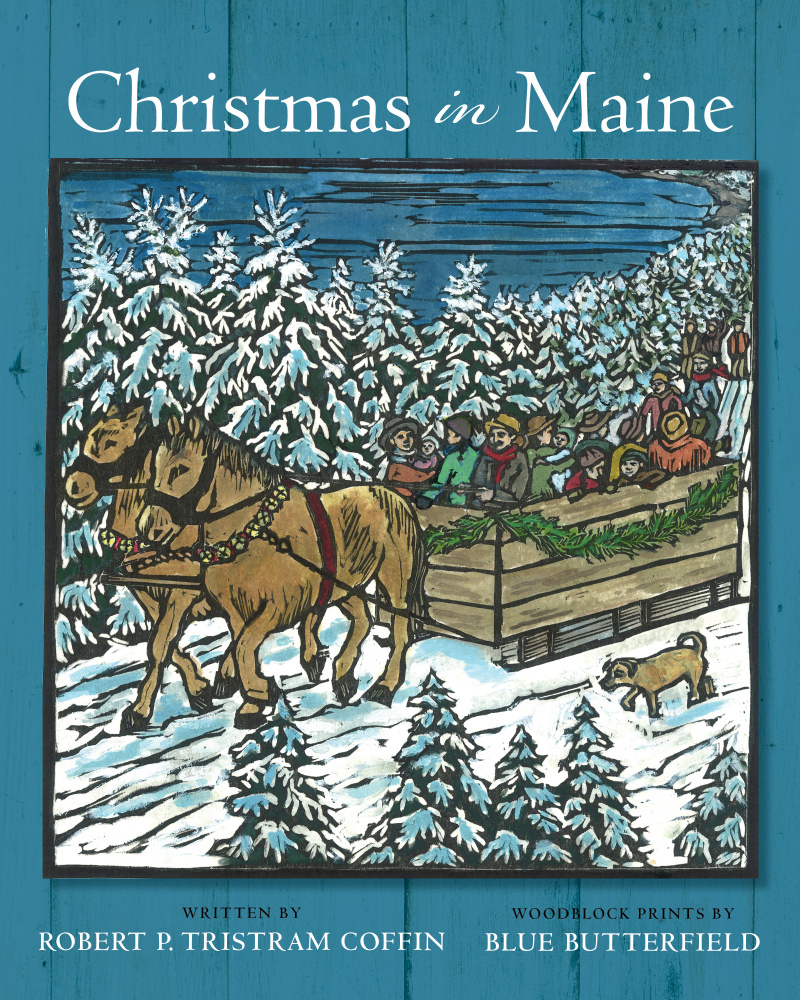“Christmas in Maine” feels like a book that has been around for a very long time. Published this fall by Islandport Press, it is a classic tale of family celebrating Christmas on a cold Maine night, beautifully illustrated with woodblock prints capturing the bustle of the holiday table, the happy chaos of many cousins and the quieting of night, as the whole family gathers around a fire for storytelling.
The 1941 essay written by Pulitzer Prize-winning poet and Brunswick native Robert P. Tristram Coffin tells of the Christmases he experienced as a boy on a saltwater farm, where there were “rose-hips stuck in pine boughs. And caraway seeds in every crust and cookie in the place.” There was an abundance of aunts cooking and uncles smoking and “cousins by the cart load.” The dining table was extended with flour barrels and ironing boards to accommodate the whole clan, and the opening of gifts by the tree – handmade ones and “boughten” ones – was a frenzy, savored all the more for knowing that the peace of Christmas night may be fleeting. The new edition is accompanied by 17 original prints by Blue Butterfield, a physician’s assistant at Maine Medical Center and a Portland woodblock artist whose popular cards and calendars are sold around Portland and the Maine coast. In a conversation lightly edited here for length and clarity, Butterfield spoke about her love of woodcuts and big family gatherings.
Q: How did this book come together?
Islandport Press reached out to me. Genevieve Morgan, who was the editor (on the book) then, went to Bowdoin with me. A librarian had sent in Coffin’s manuscript – it was in a pamphlet form – and said, ‘I really think this would make a great Christmas book.’ As Genevieve tells it, she got the manuscript and was walking into Rosemont Market and saw some of my cards and said, ‘Of course, this would be the right artist for it.’ She sent me the text, and I thought the writing is beautiful. It’s very evocative to me of what we sort of all want our family gatherings to be.
Coffin’s essay, which is full of nostalgia, doesn’t necessarily read as though it was written for children. But your prints have such whimsy to them. Do you consider this a children’s book?
It’s what I call a read-a-loud. There are multiple paragraphs to a page. It might not be something a small child could read on their own, but I do think it works well read aloud. My children certainly enjoyed the historical aspects of what the children were doing in the book.
Why are woodblock prints your medium of choice?
It’s the only medium I work in. I’m not really a natural draftsman. Some people can just draw, and that’s certainly not me. Woodcuts force you to do something really unusual: You have to address every square inch of the plate. Whatever you carve away is what won’t print, so if you don’t carve a section of block it will be black. It forces you to think about every part, and it’s very naturally graphic, very bold, very demarcated lines. Everything is quite fixed. The surety of where things go, combined with the fact that so much of what I do is actually cutting around shapes – I really love finding negative space, things around objects, carving the light around objects out. People say you have to think in reverse – the plate also prints in reverse of what it actually is. After a while, it all sort of makes sense.
I’ve been making woodcuts since I was at Bowdoin, for about 25 years. The ones for this book, it was really easy – and I’m a first-time illustrator. A lot of (Coffin’s) descriptions were so perfectly suited to woodcut and specific, so a lot of them were easy to figure out. I also took a lot of inspiration from marrying into a large family. My husband is one of eight. Our family gatherings are very similarly chaotic, in a happy way. Having a meal with ironing boards and babies underfoot and dogs…
So, do you subscribe then to Coffin’s idea that “the secret of the best Christmases is everybody doing the same things all at the same time”?
As much as I did not want to have eight children myself, I love large families. And there’s something about the magic of having people all doing something at the same time. It’s really about your investment into the family activity, not you doing exactly what you want. I certainly feel it in my husband’s family. People come together, and we all do the same thing. Even if it’s not everyone’s priority, it’s the family’s priority.
What is the thing you do every year, your tradition?
We jump in Crescent Lake. We all skinny dip after the meal. The lake is cold, and there are plenty of people who would not want to do that on their own, but somehow when you get 20 or 30 people together, a certain madness overtakes.
Features Editor Chelsea Conaboy can be contacted at:
cconaboy@pressherald.com
Twitter: cconaboy
Send questions/comments to the editors.




Success. Please wait for the page to reload. If the page does not reload within 5 seconds, please refresh the page.
Enter your email and password to access comments.
Hi, to comment on stories you must . This profile is in addition to your subscription and website login.
Already have a commenting profile? .
Invalid username/password.
Please check your email to confirm and complete your registration.
Only subscribers are eligible to post comments. Please subscribe or login first for digital access. Here’s why.
Use the form below to reset your password. When you've submitted your account email, we will send an email with a reset code.